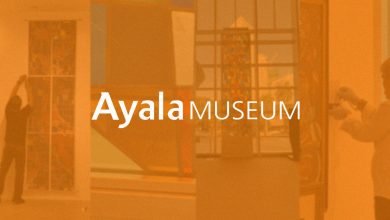Change is good, the Kidlat awards said. That goes not just for creativity, but even areas like accounting and finance. That’s the promise of Pegasus, the agency management software system newly arrived in Manila via the revitalized Ace Saatchi & Saatchi. adobo sits down with Pegasus’ Les Parry for a chat about change.
Pegasus itself has been around since the late 1980s, mainly in New Zealand. Most of the leading agencies there use it, including the Clemenger group and Saatchi. The entire Publicis group in Singapore (including media agencies) is on it, supported out of Sydney. Other long-term clients are in Hongkong and Japan.
Les Parry points out that “In a short demonstration to a handful of guys here, we showed them our client list. Almost all have been with us 15 years. To which I asked: one, how many clients have you had for 15 years, and two, how many of you have been using the same software for 15 years? None of them said yes. We’re confident that when we get a client we hang on to them, because they’re happy with the product and the service.”
Parry continues, “Pegasus has been often viewed an accounting package. But we’re now moving more into agency management — not only what’s happening in creative and accounts, but also whether the estimate has been approved or whether you bill the client. Recently we added Job Alerts, which show when you’re approaching a job’s estimated hours or cost. You can quickly see which jobs are in danger, then be proactive about managing the client and cost. That’s what we’re geared towards. We’ve had a system that’s been running for 25 years in very successful agencies. Now we are providing a tool that the entire agency could use.”
How would account management people, producers and others not on the finance side use it day-to day?
Once a client approaches for a piece of work, account management opens a job. Just open a job with a brief description — no need to get up or write on a piece of paper. That captures the information in a meaningful format, and can also trigger an instruction to the creative department. Creative can use the Traffic Module to schedule jobs, and the account manager will say when the deadline is.
The system can show you the whole job: the original brief, artwork, estimates to client, purchase orders to printers, etc. You can then use the work-in-progress to track the stages, and allocate those to individuals. So any individual can see what task they’ve been given and when those deadlines are. It allows them to prioritize their time as well.
At the end of the day, an agency can see how productive a certain client, person or business group is… is that right?
Yes, we’ve got quite unique report writers. We’ve had them for a long time, [but] now agencies are all coming to us asking that we set a system up more finitely to understand client profitability.
We’ve got traditional ledger writers for reporting, etc. The client profitability report lets you measure billing and revenue by client. Time sheets apply a cost rate per employee; the system takes the amount of time each individual spends on a client and apportions that cost. So you get client profitability in billings and revenues, plus the direct staff cost associated, for the net profit after all the effort put in.
There’s also staff efficiency. You can look at an individual job’s estimated cost compared to actual cost, and what you actually billed. You can sort those reports in very helpful ways, even by account manager. You see very quickly which managers consistently overestimate, or more importantly, underestimate. You can get any information you want, real-time.
When we sit down and show people these report writers, the magnitude of what they can do is a bit overwhelming, until they actually get to grips and realize they can do it very quickly.”
Things that change your business usually start by chopping the bottom line. But Pegasus is relatively affordable and scalable. A suitcase-size server sits quietly in a corner of Saatchi House, but even that is optional. Many clients access completely over the Internet, which suits shops as small as 10-15 staff and can be done from any reliable connection. About 75 clients already do this, and it is gaining in popularity.
There is no hardware requirement or huge upfront investment. Parry’s team helps the agency migrate seamlessly from their existing system; conversion and installation take place over a weekend, and go live on Monday with minimal training. The Saatchi installation needed only a team of two, for five weeks.
Parry says, “Many of our competitors will take the approach that ‘you have to understand our software.’ We prefer the approach that ‘we need to understand how your business works, so we can adapt the software so you.’ You run it your way and we’ll make the software work for you.
There are no initial license fees, simply a monthly fee based on the number of users, usually about 15 users for 100 agency staff. “We don’t price per user or per module. In a market like Manila, many of these features are completely new. So we start simple, then just roll out parts of the system as they become more confident. As the average number of users increases, that’s when the price increases.
As an average, it’s around A$3,000 a month for an agency up to 30 staff. It very, very quickly pays for itself. In New Zealand they run an agency of 30 literally with one and a bit people: 1 full-time finance person and 1 part-time finance director. Once the reports are built, the system does a lot for you.
It’s also what you gain in lost revenue. It’s not necessarily measurable, but [with] manual systems, if someone forgets the estimates you don’t get the job. This quantifies [that]. Once someone opens the job you know you’re we’ve done something, spent time, got cost — we have to bill the client.”
Pegasus has been around since the 1980s. How did you get to where are you now?
A lot of the [overseas] installations were by invitation. We were thought of as a New Zealand company, but in the last four years we’ve been winning clients from both our main rivals. We have a much smaller staff base [than them], but we hang on to our clients much longer. Having been an accountant in the industry and used the other products, I know this works. You don’t need much support.
We focus on advertising and media agencies, but anybody can benefit who can appreciate the visibility of converting time on a job to an actual invoice, rather than just doing an estimate and billing to it.
One thing that interests us is growing agencies. Droga5 came to us, as did John Singleton’s agency Banjo. Cummins & Partners were 5 staff when they introduced Pegasus, and they’re now 120. We’re interested in anyone young and ambitious. They understand the need, and they’re keen to learn from us. Anyone who’s at 15, 20 with ambitions to grow to 40,50, we can help everyone says, we haven’t got time, we haven’t got money – this can save you plenty of both.”







